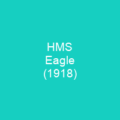Was the Defense of the Cutter Eagle Just Another Naval Battle?
The defense of the cutter Eagle was a pivotal moment during the War of 1812, but it wasn’t just any battle. It was a strategic maneuver that showcased the resilience and determination of American sailors in the face of overwhelming odds. Imagine a small schooner, the USRC Eagle, facing off against two formidable British ships on Long Island Sound – could such an underdog story be true?
The Setting: A Battle on Long Island
Imagine you’re standing at Negro Head, watching as history unfolds. The year is 1814, and the air is thick with tension.
The USRC Eagle, a 130-ton schooner with six cannons, was commanded by Frederick Lee. On October 9, 1814, she set sail to rescue an American packet ship that had been seized by the British Liverpool Packet. Little did they know, this mission would lead them into a confrontation with HMS Dispatch and HMS Narcissus.
The Battle Begins: A Race Against Time
Can you picture the Eagle trying to outrun her pursuers? It was a race against time, but she couldn’t escape. The British ships were faster, and soon, the Eagle found herself in close range with HMS Dispatch.
The battle began as the Eagle launched cannon fire while attempting to withdraw. But it wasn’t enough; the larger Dispatch and its barges continued their advance, leading to a fierce engagement that would test the limits of the American crew’s resolve.
Beaching the Eagle: A Tactical Move
Imagine the Eagle being beached near Negro Head as a strategic move. It was like a chess piece being moved to block an opponent’s advance, but it didn’t work out that way for the Americans.
Fredrick Lee maneuvered the Eagle towards Negro Head and beached her there in hopes of preventing Dispatch from following. However, this tactic backfired as Dispatch and its barges continued their advance, leading to a series of events that would define the fate of the USRC Eagle.
The Cow’s Tragic Role: A Symbolic Moment
Can you imagine a cow grazing in the area dying after being hit by a round shot fired by one of the Royal Navy ships? It was a tragic moment, but it also symbolized the intensity and randomness of war.
A cow grazing nearby met its untimely end when it was struck by a round shot. This event, though small in scale, highlighted the harsh realities of naval warfare during that era. The battle raged on as HMS Dispatch attacked and damaged the American cutter Eagle, but the crew managed to repair and re-float the ship.
The Return of the British Fleet: A Prolonged Battle
Imagine a fleet returning with more ships, including the Liverpool Packet and the 32-gun frigate HMS Narcissus. It was like a storm gathering on the horizon, threatening to overwhelm the American forces.
The British returned with additional ships, and the battle intensified. Despite their efforts, the Eagle was eventually taken under tow by the Royal Navy after a prolonged engagement. The outcome was not in favor of the Americans, but there were only two casualties reported, no fatalities, and despite the loss, Frederick Lee and the Eagle’s crew were celebrated in newspapers.
Legacy: A Song of Resilience
The defense of the cutter Eagle is among six vessels celebrated in ‘Semper Paratus,’ the service march of the US Coast Guard’s predecessor force, the Revenue Marine. It’s a testament to their spirit and determination during the War of 1812.
Even though the battle ended with the loss of the Eagle, it was a moment that highlighted the resilience and bravery of American sailors. The story of the USRC Eagle is not just about defeat but also about the enduring spirit of those who fought for their country in times of war.

The defense of the Cutter Eagle stands as a reminder that even in the face of overwhelming odds, human spirit and determination can shine through. It’s a story that continues to inspire generations, proving that no matter how small or seemingly insignificant our actions may be, they can have a profound impact on history.
You want to know more about Defense of the cutter Eagle?
This page is based on the article Defense of the cutter Eagle published in Wikipedia (retrieved on December 1, 2024) and was automatically summarized using artificial intelligence.







